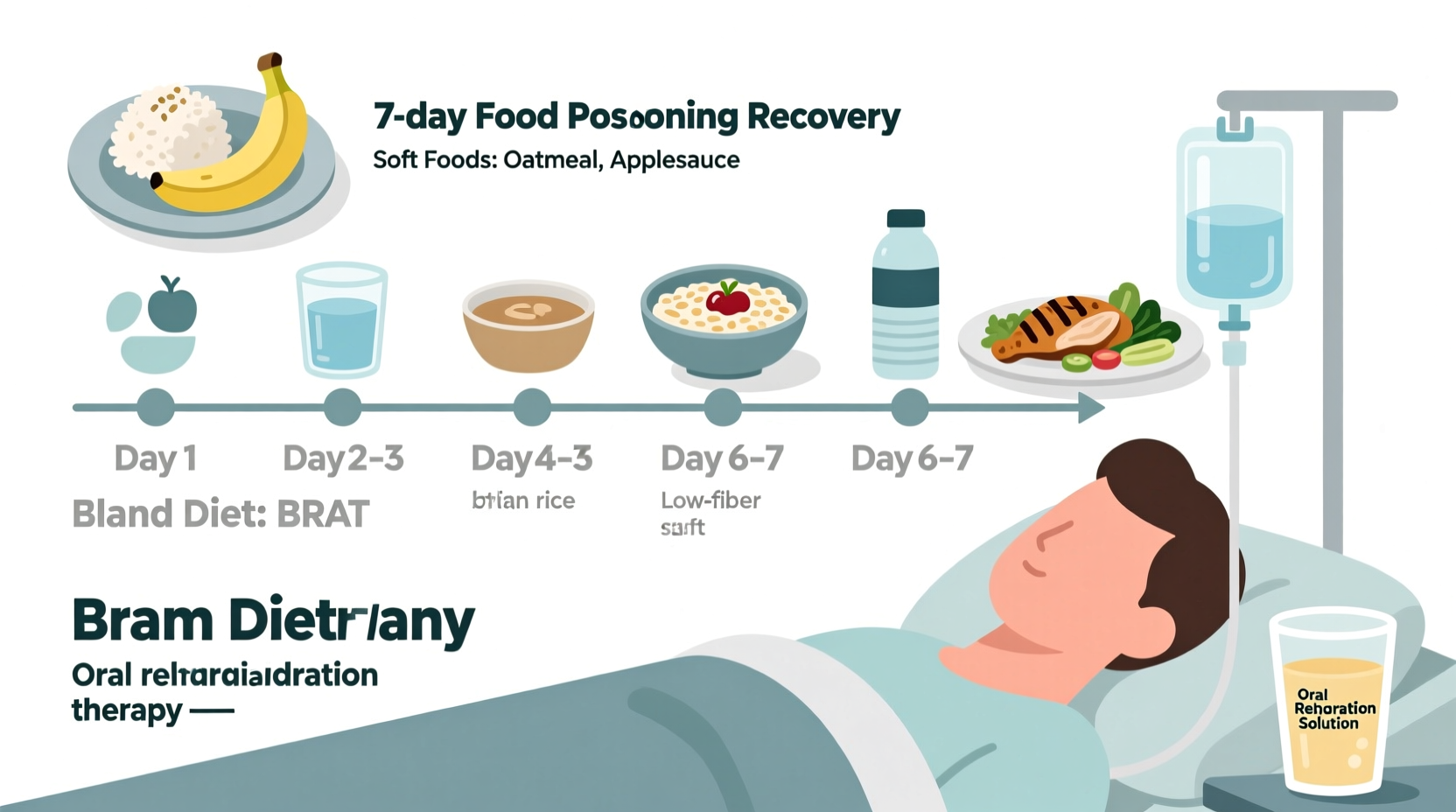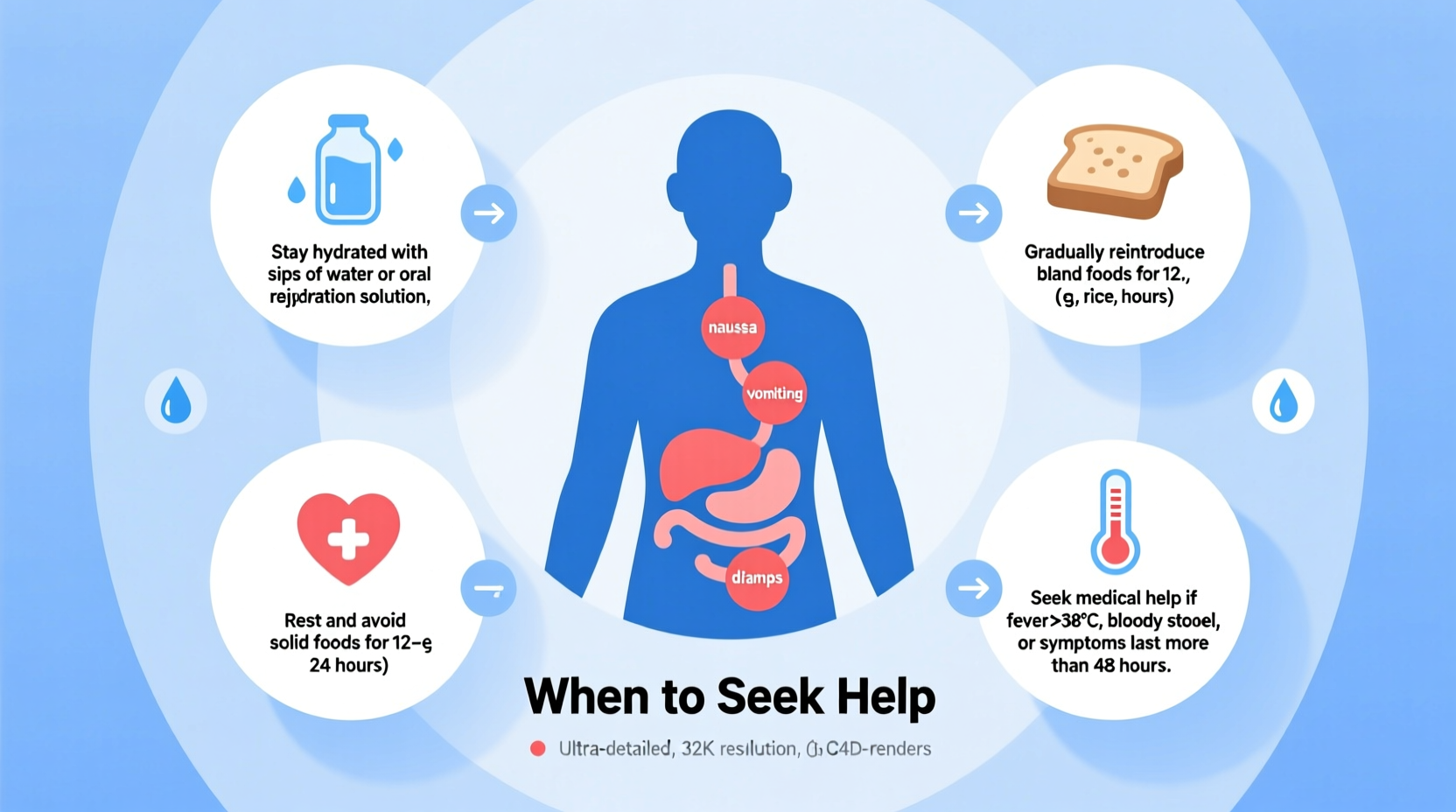If you're experiencing food poisoning, immediately stop eating and focus on hydration with small sips of clear fluids. Avoid anti-diarrheal medications initially as they can trap harmful bacteria. Seek emergency care if you have bloody stools, high fever above 102°F (38.9°C), signs of severe dehydration, or if symptoms persist beyond 48 hours. Most cases resolve within 1-3 days with proper home care focused on fluid replacement and gradual reintroduction of bland foods.
Food poisoning strikes unexpectedly, leaving you weak, nauseated, and wondering what to do next. When your stomach is churning and you're making frequent trips to the bathroom, you need clear, actionable guidance—not medical jargon. This guide provides step-by-step instructions based on CDC and WHO protocols to help you recover safely and efficiently.
Your Food Poisoning Action Timeline
Understanding the progression of food poisoning helps you anticipate what's coming and take appropriate action at each stage. The Centers for Disease Control and Prevention identifies distinct phases that most cases follow:
| Time Since Exposure | Typical Symptoms | Recommended Actions |
|---|---|---|
| 6-24 hours | Nausea, stomach cramps, initial vomiting | Stop eating, begin small sips of fluids, rest |
| 24-48 hours | Diarrhea intensifies, possible fever, dehydration risk increases | Focus on electrolyte replacement, monitor warning signs |
| 48-72 hours | Symptoms gradually improve, energy returns | Introduce BRAT diet, continue hydration |
| 72+ hours | Most symptoms resolved, full recovery | Resume normal diet gradually, assess prevention strategies |
First 24 Hours: Critical Recovery Steps
What you do in the first day determines your recovery speed. The World Health Organization emphasizes these immediate actions:
Hydration Protocol That Works
Dehydration is the most dangerous complication of food poisoning. Instead of drinking large amounts at once (which often triggers more vomiting), follow this pattern:
- Take 1-2 tablespoons of fluid every 5-10 minutes
- Use oral rehydration solutions (like WHO formula) or make your own with 1 liter water + 6 tsp sugar + 1/2 tsp salt
- Include electrolyte-rich options like coconut water or broth
- Avoid sugary drinks, caffeine, and alcohol which worsen dehydration
What NOT to Do During Initial Phase
Common misconceptions can prolong your illness:
- Don't take anti-diarrheal medications immediately—they prevent your body from expelling toxins
- Don't eat solid foods until vomiting stops completely
- Don't assume "just one more day"—know when symptoms require medical attention
- Don't return to normal diet too quickly, triggering relapse

When Home Care Isn't Enough: Medical Warning Signs
While most food poisoning cases resolve at home, certain symptoms require immediate medical attention. The Mayo Clinic identifies these critical warning signs:
| Normal Symptoms | Warning Signs Requiring Medical Care |
|---|---|
| Occasional vomiting | Vomiting lasting more than 24 hours or inability to keep liquids down |
| Moderate diarrhea | Bloody or black stools indicating internal bleeding |
| Mild stomach cramps | Severe abdominal pain or tenderness |
| Low-grade fever | Fever above 102°F (38.9°C) |
| Temporary weakness | Signs of severe dehydration: dizziness when standing, no urination for 8+ hours, dry mouth |
Days 2-3: Gradual Recovery Process
As symptoms begin to subside, your reintroduction of food matters significantly. The BRAT diet (bananas, rice, applesauce, toast) has been recommended for decades, but modern guidelines suggest expanding this approach:
- Day 2: Clear liquids only (broth, herbal tea, electrolyte solutions)
- Day 3: Introduce bland, low-fiber foods—bananas, white rice, boiled potatoes, plain toast
- Day 4: Add protein sources like boiled chicken or eggs
- Day 5+: Gradually reintroduce normal diet, avoiding spicy, fatty, or dairy foods initially
Listen to your body—if a food triggers symptoms, stop and wait another day before trying again. The UK National Health Service notes that rushing this process often causes symptom relapse, extending recovery time by several days.
Preventing Future Episodes: Practical Food Safety
Understanding how food poisoning occurs helps prevent recurrence. Most cases stem from four common mistakes in food handling:
- Temperature danger zone: Keeping food between 40°F and 140°F (4°C-60°C) for more than 2 hours allows bacteria to multiply rapidly
- Cross-contamination: Using the same cutting board for raw meat and vegetables without proper cleaning
- Inadequate cooking: Not reaching safe internal temperatures (165°F/74°C for poultry, 145°F/63°C for fish)
- Poor hand hygiene: Not washing hands thoroughly after handling raw meat or using the bathroom
Implement these evidence-based prevention strategies recommended by food safety experts:
- Use a food thermometer for all cooked meats
- Wash hands for 20 seconds with soap before and after food preparation
- Separate raw meats from other foods in grocery bags and refrigerator
- Refrigerate leftovers within 2 hours (1 hour if room temperature exceeds 90°F/32°C)
Special Considerations for Vulnerable Groups
Food poisoning poses greater risks for certain populations. The CDC identifies these groups as needing extra caution:
- Children under 5: More susceptible to dehydration; seek medical care if vomiting persists beyond 12 hours
- Adults over 65: Weakened immune systems; monitor closely for complications
- Pregnant women: Certain pathogens like listeria can harm fetus; seek immediate care for any food poisoning symptoms
- Immunocompromised individuals: Higher risk of severe complications; contact healthcare provider at first symptom











 浙公网安备
33010002000092号
浙公网安备
33010002000092号 浙B2-20120091-4
浙B2-20120091-4